Play
Action Figures
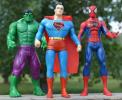
Called action figures rather than dolls, these doll-like toys are targeted for boys. The action figures are traditionally created from comic book characters, movie characters, and real life heroes whose stories can be acted out as children play with them.
Alphabet Blocks

The idea of using alphabet blocks was seen as an essential tool for learning for young children. It encouraged learning to read and spell in an enjoyable way. Typically, a set of alphabet blocks contains 26 blocks, each containing a letter of the alphabet.
Associative Play

Associative Play is one of the categories used to describe the development of social play by preschoolers. It is generally the first stage where social interaction is required in children’s play as they engage in a mutual activity, though not working toward a common goal.
Attunement Play

Attunement play has been described as the base state of play. When an infant around three or four months of age and a caregiver make eye contact with each other resulting in an emotional connection, they are said to be "attuned" with one another in a playful way with each experiencing a spontaneous surge of emotion.
Balance Bike
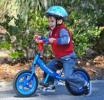
A balance bike is a training bicycle that has no pedals, gears, or chains. It offers an easy transition from walking to riding, for young children especially.
Basketball

The game of basketball is a team sport enjoyed both on the school playground and on indoor courts. The history of the game goes back to the early 1890s with peach baskets nailed to the lower rail of a gymnasium balcony.
Biophilia
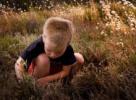
Described as the love of life and living systems, biophilia is thought to be a genetic result of evolutionary processes. Biophilia is seen in children, especially as they are drawn to animals and enjoy playing outdoors in natural settings.
Block Play

Building blocks offer hours of open-ended play and learning, and block play has been a classroom mainstay in early childhood and elementary school education for years. Block play was emphasized and studied by early educators, such as Froebel, Montessori, Hill, and Pratt.
Board Games
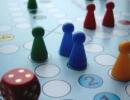
One of the most popular and enduring types of games are board games. Board games offer an opportunity for people to interact with each other in an entertaining way, as well as exposing children to real life situations that expand their knowledge.
Capture the Flag

Usually played outdoors, Capture the Flag is played with two teams of children with the object of capturing the opponent’s flag. The Capture the Flag game has its origins on the battlefield where armies would fly their flags while engaged in battle.
Checkers
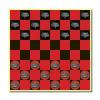
Checkers is a popular board game played by children and adults alike. The game is played on a checkerboard of two colors, usually black and red, with the most popular size in America being 64 squares on an 8x8 board. The board game is played around the world and is known as draughts (pronounced "drafts") in Europe.
Chicago Children's Museum

Chicago Children's Museum is a not-for-profit, hands-on museum whose mission is to "create a community where play and learning connect." Chicago Children's Museum has child-centered interactive exhibits that utilize play to address children's developmental needs.
Children's Museums
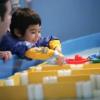
Children's museums are not traditional museums with exhibits of ancient artifacts scaled down for children. They are interactive places designed specifically for children where they learn through play and exploration. Children discover and gain understanding through a myriad of experiences in a hands-on environment based on their own interests and pace.
Clapping Games
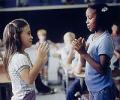
Throughout history and around the world children have been playing clapping games. Hand clapping, often in complex patterns while chanting rhymes, requires concentration, coordination, and cooperation with at least one other child.
Climbing

Climbing is an activity that children enjoy from an early age. They climb for excitement and the feeling of achievement. Exploration is an important part of climbing, whether they are climbing a tree or scaling a rock wall.
Constructive Play

When children manipulate their environment to create things, they are engaged in constructive play. Experimenting with materials, they can build towers with blocks, construct objects with miscellaneous loose parts, play in the sand, and draw sidewalk murals with chalk.
Cooperative Play

In the development of social play by preschoolers, cooperative play has been designated as the highest category of play. Cooperative play focuses on children working together to achieve a common goal, such as building a play structure, putting together a puzzle, or engaging in dramatic play.
Croquet
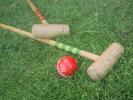
The game of Croquet is played by hitting a ball through a series of wire hoops with a mallet. As a fun backyard activity for children and adults alike, this game has been popular in the United States since its introduction in the mid-1800s.
Dodgeball

The game of dodgeball has been a popular childhood activity on the school playground as well as in physical education classes for years. The object of the game of dodgeball is to avoid being hit by balls thrown by opponents while attempting to eliminate the other team's players by hitting them with balls.
Dramatic Play

Dramatic play is a form of symbolic play where a child pretends to take on a role of someone else, imitating actions and speech from earlier observed situations. The elements of reality and make-believe are involved as children imitate real-life people and situations they have experienced.
Etch A Sketch
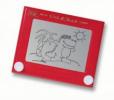
Manufactured by the Ohio Art Company, the Etch A Sketch is a mechanical drawing toy that has been a popular classic toy for over 50 years. The invention of the Etch A Sketch is traced to an electrician in France by the name of Andre Cassagnes.
Flexible Flyer
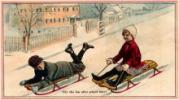
Speeding down a snowy hill on a Flexible Flyer snow sled has been a winter activity enjoyed by children since the 1880s. The Flexible Flyer continued to be sold for over 100 years with little change from its basic design, and the iconic sled is still highly sought after by young and old alike.
Four Square

A fast paced ball game, four square is easy to play with no time constraints. Four square has been a popular playground game during recess for years. It has also been called box ball and Kings Corners.
Free Play
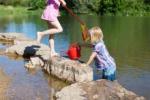
The type of play known as free play is unstructured, voluntary, child-initiated activity that allows children to develop their imaginations while exploring and experiencing the world around them. It is the spontaneous play that comes naturally from children’s natural curiosity, love of discovery, and enthusiasm.
Frisbee

The Frisbee is a plastic flying disc that has been enjoyed as a recreational toy for people of all ages, whether in the backyard, at the park, or on the beach. They are typically used as a game of catch with the Frisbee spinning through the air when thrown.
Froebel Gifts
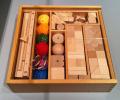
Friedrich Froebel was a German educator in the early 1800s who is considered the founder of the kindergarten movement. He developed a series of play materials he called Gifts that included geometric building blocks designed to teach children about forms and their relationships in nature.
Functional Play

Functional play has been described as the first play of children. Beginning in infancy, as a child learns to control his actions and make things happen, he finds enjoyment in shaking a rattle, splashing in the bath, and dropping objects repeatedly from his high chair.
G.I. Joe
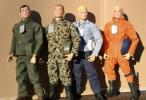
G.I. Joe is considered to be the first action figure to enter the toy market. As the first doll-like toy marketed specifically for boys, the first G.I. Joe action figures were just under 12 inches tall and had moveable joints to allow for posing in different stances.
Gaga Ball
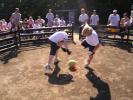
Gaga ball is a popular playground game similar to dodgeball, but it is considered to be a kinder, gentler form of the game. The game is played inside a hexagon or octagon pit.
Games With Rules

Games with rules is a level of play that imposes rules that must be followed by the players. It requires self-regulation by the children who play, so they can successfully follow the rules and curb their own personal ego needs.
Gun Play

Children have fantasized about triumphing over evil for years. Fighting the "bad guys" seems to be an inherent desire, especially for boys, who use gun play as a means to feel empowered. Whether children are playing cowboys and Indians, cops and robbers, pirates, soldiers, or spies, play guns are usually involved as they engage in pretend play.
Hopscotch

The children's game of hopscotch has been a popular playground activity for years. With the basic idea of not treading on lines, variations of the game are played around the world. The English name refers to hopping over the "scotch," which is a line or scratch in the ground. Lines are drawn in a variety of patterns of squares for the children to hop in with a particular order determined.
Hot Wheels

Hot Wheels is a diecast toy car brand manufactured by Mattel since 1968. Designed as miniature customized muscle cars, Hot Wheels are built for speed and can be raced on flexible, plastic tracks.
Hula Hoop

The hoop has been a popular children's toy for thousands of years, and the introduction of the Hula Hoop in 1958 by the Wham-O toy company has been documented by sociologists as one of the biggest fads ever to take hold in America and one of the most significant events of the time. Because of its enduring popularity, the Hula Hoop was inducted into the National Toy Hall of Fame in 1999.
Ice Skating

A favorite winter pastime of children through the years has been ice skating. Once enjoyed primarily as a fun recreational activity on a frozen lake or river, ice skating has also developed into competitive events, such as speed skating, figure skating, and ice hockey.
Imaginary Companions

An imaginary companion is a friend whom a child creates, talks about, and interacts with on a regular basis. Young children use imaginary companions as a tool to help them make sense of the world.
Inclusive Play

The UN Convention on the Rights of the Child states in Article 31: "Children have the right to relax and play, and to join in a wide range of cultural, artistic and other recreational activities." The right to play applies to all children regardless of their race, religion, or abilities. Inclusive play for children primarily allows equal access and participation in play opportunities. But it is more than just inclusion. High quality play opportunities for children regardless of their abilities is the aim for inclusive play.
Interactive Environments

Interactive play environments involve a combination of elements that interact with each other as children play. Natural materials, such as sand and water, allow for hands-on, active manipulation that enhances learning as well as the play experience. Playing outdoors offers a rich variety of play opportunities with natural elements, such as plants, trees, flowers, dirt, mud, animals, and insects. In these rich environments, child's play involves the whole child combining gross motor skills, fine motor skills, senses, emotion, intellect, individual growth, and social interaction.
Jacks
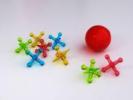
The game of jacks is a popular activity enjoyed by children. With many variations over the years, the game involves tossing small objects to be picked up in succession. Similar games with varying names are played throughout the world, such as jackstones, fivestones, and knucklebones.
Jump Rope

The jump rope is a familiar children's toy on the playground. It has been a popular toy for centuries and was inducted into the National Toy Hall of Fame in 2000. Jump ropes are affordable, lightweight, and portable and offer exercise as well as fun activities for children.
Kick the Can

A classic children's game, Kick the Can has elements of hide and seek, tag, and capture the flag in its game play. The rules of the game are simple and can be played outdoors in a variety of settings, including back yards, streets, or open spaces that allow for hiding places for children. Rather than using a ball, the only piece of equipment is an object that can be kicked. The name of the game is Kick the Can, because often a discarded empty can from the trash is used that can have rocks inserted into it to make noise.
Kickball
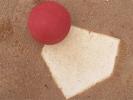
Played with elements similar to baseball and soccer, one of the most popular children's games on the playground is kickball. The game is played by two teams who try to score more runs than their opponents by rounding the bases and crossing home plate as many times as possible after successfully kicking the ball into play.
Kindergarten
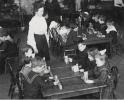
Kindergarten is a classroom program typically for children from 4 to 6 years of age. It is designed to be a transition for young children from home into the traditional school environment.
Kites

Flying kites on a breezy day is a delightful activity for children and adults alike. Kites come in many shapes and sizes, and their different designs allow for different flight maneuvers in the sky. However, the principles of flying a kite are very much the same no matter the design.
Lincoln Logs
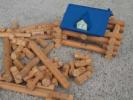
The popularity of children's construction toys grew from simple wooden blocks to the development of Lincoln Logs in the early 1900s. Lincoln Logs are considered a classic American toy and were honored by being inducted into the National Toy Hall of Fame in 1999 for their enduring popularity.
Loose Parts
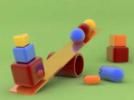
Loose parts are objects and materials that children can move, manipulate, control, and change within their play. With endless possibilities of play, they provide a high level of creativity and choice and develop children's imagination. Children often prefer playing with boxes, sticks, rocks, water, sand, and ropes that can be manipulated in whatever way they choose over traditional toys that have limited flexibility and play value.
Marbles
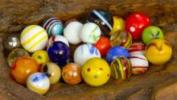
Marbles are small perfectly round objects that have been played with by children down through the ages. There is evidence of marble games being played by the ancient Egyptians, Aztecs, Romans, and Greeks. Although some early games may have been played with stones and nuts, there have also been small clay balls found in many prehistoric ruins.
Middleball

Middleball is a new sport created by Scott Loetman in 2009. A relatively simple ball game to play, Middleball utilizes indoor courts, nets, and a beach ball to offer a fun activity for people of all ages and abilities.
Mr. Potato Head
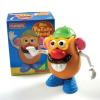
Mr. Potato Head is an iconic toy sold under the Playskool division for Hasbro. The simple concept of making funny faces by attaching plastic body parts to vegetables and fruits expanded over the years to become a worldwide franchise that includes the toy line as well as movie, television, and video game endeavors.
Nature Play

Nature play is child-initiated, unstructured play in "wild" areas, like the vacant lot next door, the neighborhood park, or a wooded area with a stream. Playing outdoors is one of the things that characterize childhood, giving children the opportunity to explore, discover, practice, wonder, change, create, and learn about the world around them.
Nature-Deficit Disorder

Nature-Deficit Disorder is a phrase coined by Richard Louv in his book, Last Child in the Woods: Saving Our Children From Nature-Deficit Disorder, published in 2005. Having spent ten years traveling around the country, in both rural and urban areas, asking parents and children alike about their experiences in nature, he discovered that in the last two generations there has been a significant decline in time spent enjoying nature.
NERF

Advertised as the “world’s first official indoor ball,” the NERF ball has the distinction of being a safe option for throwing a ball indoors. The NERF brand has expanded to include sports equipment, plastic guns that use foam darts and balls, and water guns that appeal to children and adults alike.
Onlooker Play

Onlooker play, also known as spectator play, is one of the earliest stages of play when children watch others play, but do not join in. In onlooker play as children sit or stand near other children who are playing, their motivation is to observe their play safely from a distance with no intention to be an active part of the play.
Open-ended Play

Open-ended play allows children to express themselves in play freely and creatively, not bound by preset limitations. Playing with open-ended materials with multiple uses and limitless possibilities, such as molding clay, wet sand, paint, blocks and other loose parts, allow for imaginative play.
Outdoor Play
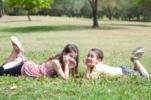
Playing outdoors is one of the things that characterize childhood, giving children the opportunity to explore, discover, practice, wonder, change, create, and learn about the world around them. Children's basic needs for freedom, adventure, risk-taking, experimentation, and just being children are enhanced by outdoor environments.
Parallel Play
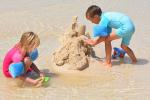
When studying play development in young children, parallel play is a description of children playing side by side, but not interacting with each other to continue their play.
PBS The Promise of Play

In the fall of 2000, The Institute for Play (IFP) created The Promise of Play, three one-hour documentaries to be aired on PBS as a miniseries.
Pickleball

Pickleball is a sport played on a court that combines elements of tennis, badminton, and ping pong. The rules of the game have been designed to not include fast serves or spiked volleys so players of all ages and abilities can play together.
Play-based Learning
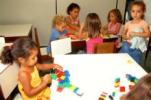
Child-centered, play-based learning is a whole-child educational approach that promotes academic, socio-emotional, and cognitive development through free play, which can also involve guided play by an adult. In guided play, teachers enhance children's exploration and learning with helpful guidance while being careful not to be invasive in the children's play.
Playwork and Playworkers

Playwork is the support given by adults in an unobtrusive way of children's open-ended, creative free play. During a play session, Playworkers are available to assist a child if needed, but strive to be as inconspicuous as possible to allow the children to direct their own play.
Pretend Play

Pretend play is a form of symbolic play where children use objects, actions or ideas to represent other objects, actions, or ideas using their imaginations to assign roles to inanimate objects or people. Toddlers begin to develop their imaginations, with sticks becoming boats and brooms becoming horses. Their play is mostly solitary, assigning roles to inanimate objects like their dolls and teddy bears.
Recess
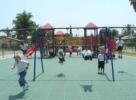
Recess for children is typically enjoyed outdoors and has been defined as a break period from the relatively inactive routine of the classroom. Traditionally, recess has been loosely structured and has allowed children to freely choose their activities and playmates on the school playground. Recesses usually last 10 to 20 minutes.
Recreation

Recreation is defined in the dictionary as a refreshment by means of some pastime, diversion, exercise, or other activity that results in relaxation and enjoyment. Research has shown that recreation improves the quality of life for individuals, raising their overall satisfaction with life.
Red Rover
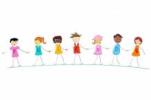
Red Rover is a classic outdoor neighborhood and playground game that children have played for years. The game is made up of two teams of children standing at least 20 to 30 feet apart, who form two lines facing each other by holding hands. The object of the game is to capture players from the other team.
Reggio Emilia Approach

The Reggio Emilia Approach is an approach to teaching children based on observing what children know, what they are curious about, and what challenges them. The emergent curriculum develops as the teachers actively seek out and follow the interests of the children.
Rock Climbing

Rock climbing is a fun and challenging activity for children that can be enjoyed on natural rock features and on artificial climbing walls. Today's playgrounds offer many types of climbing structures including artificially built rock walls with polyurethane climbing holds for children to grab and realistic-looking boulders with natural crevices to scale.
Rock-Paper-Scissors
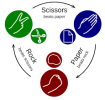
Rock-Paper-Scissors is a game played to settle disputes between two people. Thought to be a game of chance that depends on random luck similar to flipping coins or drawing straws, the game is often taught to children to help them settle arguments between themselves on their own without adult intervention.
Role Play

When a child engages in make-believe and pretend play, he takes on a role of someone else, imitating actions and speech from earlier observed situations and incorporating them into his play. Role play is based on first-hand experience and allows children to practice what happens in real life. They act in an "as if" state in their role play, "as if" it were real.
Roller Skating

Roller skating is a recreational activity in which the participants wear shoes fitted with small wheels to move on outside paved surfaces and on inside roller rink floors.
Rough and Tumble Play

Rough and tumble play has been defined as physically vigorous behaviors, such as chase and play fighting, that are accompanied by positive feelings between the players. Rough and tumble play allows a child to understand the limits of their own strength and discover what other children will and won't allow them to do.
Sand

Playing with sand encourages the imagination and creativity of children. Using shovels, buckets, and other containers and toys, children have an endless number of opportunities for exploratory play. Playing with sand includes sensory, cognitive, social, and therapeutic benefits.
Scaffolding
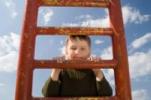
Scaffolding is an instructional technique that provides support to a learner to build on his prior knowledge helping him internalize new concepts or perform more difficult tasks. The assistance provided by a more knowledgeable person to help another learn to perform a task is a temporary framework that is gradually removed as the learner masters the task.
Skateboard
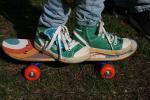
A skateboard is a wooden board with four wheels attached to the underside. The skateboard is ridden in a standing position that is propelled forward by pushing off with one foot or by the force of gravity on a slope.
Sledding

Sledding is a popular winter activity for the whole family. Since sleds are relatively inexpensive and snow-covered sledding hills are free, sledding provides a great opportunity for children to enjoy the outdoors and nature while offering good physical exercise and fun.
Slinky

The Slinky toy has been enjoyed by generations of children since its introduction in 1946. It is a simple toy made of a coiled spring that is advertised with words to describe the many actions children can make it do: walk, bounce, spring, juggle, flip, and jiggle.
Soccer
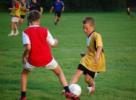
Soccer is a simple team sport that is enjoyed by children as young as three years of age. The game is an inclusive activity that involves children of varying shapes and size, since the physical size of the players is not an important factor in their success as players.
Solitary Play
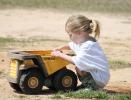
Solitary play, also known as independent play, is one of the earliest stages of play where children play alone because they have not developed socially to be able to play with others yet or because they choose alone time.
SuperBall

The SuperBall is a small synthetic rubber ball that has the ability to bounce higher and longer than ordinary bouncing balls. When the SuperBall was introduced in the summer of 1965, it became an instant hit with children and adults alike who were fascinated with its amazing properties.
Superhero Play

Superhero play is a form of imaginative, dramatic play where children use costumes, props, or action figures to imitate the superheroes they admire. Children are drawn to the power, strength, and special attributes of superheroes and engaging in superhero play helps them feel empowered and in charge of their world.
Swimming

Whether trying to cool off in warm weather or competing in a sporting event, swimming is enjoyed by children and adults alike and is listed as the second most popular sports activity in the United States. Swimming is great exercise, offers physical and mental health benefits, and is fun for the whole family.
Swinging

Children through the years have enjoyed swinging, whether on the playground, at the park, or in the backyard. The back and forth motion of the swing can be both relaxing and exciting depending on the child's play motivation. The sensations of flying and falling make swings one of the most popular pieces of equipment on the playground.
Symbolic Play

Symbolic play is the ability of children to use objects, actions or ideas to represent other objects, actions, or ideas as play. A child may push a block around the floor as a car or put it to his ear as a cell phone. At around 8 months of age, as their symbolic thinking develops, children become familiar with objects, actions, and ideas through observation and exploration.
Team Sports

Team sports are organized games governed by a set of rules that are recognized and interpreted by an official governing body as the standard for play. The top team sports for children ages 6 through 17 are basketball, baseball, soccer, football, and volleyball. About 20 million American children play organized out-of-school sports with about 25 million playing competitive school sports.
Tetherball

Tetherball is a game that has been popular on playgrounds, schoolyards, and summer camps for years. The game involves two players who attempt to hit a ball attached to a pole by a rope in opposite directions until one of them wraps the rope completely around the pole and the ball stops. The history of the game is uncertain with some suggesting that in the ninth century it started with the Tatars.
Theme Play

A form of symbolic play, in theme play children pretend to take on roles of others they have observed from earlier situations. Using theme ideas complete with dress-up costumes and props adds to their development.
Therapeutic Value of Play

Play can be very therapeutic for children. Play is a way of removing stress and having fun. Play implies freedom, safety, trust, and a sense of well-being. Adding play to children's lives leads to less depression, less anxiety, less stress, and less aggression. Play is fundamentally important for the emotional health of children and is a way for them to express emotion that cannot be said with words.
Tinkertoy
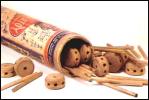
A classic children’s toy that has lasted for over 100 years, Tinkertoy construction sets feature spools and rods that were designed with mathematical principles in mind to allow children to build sturdy structures during their constructive play.
Tree Climbing

Children naturally love to climb trees. If they find a tree with numerous branches that is accessible to climb, they will start their ascent to explore the heights above. Climbing is an activity that children enjoy from an early age. Most children find climbing fun and strive to accomplish reaching the highest point possible to view the world around them.
Unit Blocks

Caroline Pratt, an American innovative educator who was part of the progressive movement in the early 1900s, is credited for developing wooden blocks, called unit blocks. They were similar to the blocks used by Friedrich Froebel in his kindergartens.
Urban Play
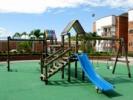
An urban area is an area with a high population density. Americans living in urban areas currently number 79 percent of the population. It is projected that by the year 2050 that percentage will rise to 90 percent. This demographic shift often makes urban parks the sole connection to the natural world for an increasing number of children.
Waldorf Schools
The Waldorf early childhood movement stemmed from a group of workers at the Waldorf-Astoria Cigarette Factory in Stuttgart wanting a better method of teaching for their children. They asked Rudolph Steiner, to design a teaching method where teachers would teach out of love and respect for their students.
Water Play

Water is one of the earliest play materials, readily accessible in most areas of the world in the ocean, lakes, rivers, creeks and ponds. Water holds an endless fascination to children who seldom miss opportunities to play in it. Because most people did not have easy access to the natural sources of water, swimming pools were built.
Where Do The Children Play?

Where Do The Children Play? is a PBS documentary, a corresponding study guide, and an outreach project promoting the importance of open-ended play for the development of healthy children.
Zone of Proximal Development

The zone of proximal development is a concept developed by social cognitive theorist and psychologist Lev Vygotsky. The zone of proximal development is the area where the child cannot solve a problem alone, but can solve it successfully under the guidance or collaboration with an adult or more advanced peer.

